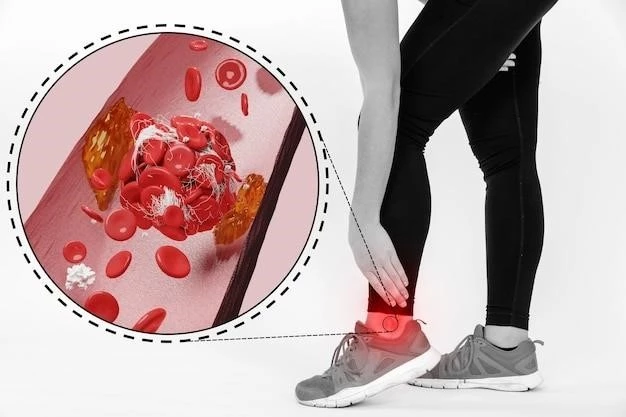Causes of Arthrogryposis Multiplex Congenita
Arthrogryposis can result from genetic factors, environmental influences, or neuromuscular abnormalities.
Genetic Factors
Genetic factors play a significant role in the development of arthrogryposis. Mutations in various genes affecting muscle development or function can lead to joint contractures and muscle weakness.
Environmental Influences
Various environmental factors such as infections, exposure to toxins, or inadequate blood supply to the fetus during pregnancy can contribute to arthrogryposis. These influences may disrupt normal muscle and joint development, leading to the condition.
Neuromuscular Abnormalities
Neuromuscular abnormalities, such as issues with nerve function or muscle development in the fetus, can result in arthrogryposis. These abnormalities can affect the communication between the nerves and muscles, leading to joint contractures and muscle weakness seen in this condition.
Treatment Options for Arthrogryposis
Treatment options for arthrogryposis include physical therapy, occupational therapy, and orthopedic interventions.
Physical Therapy
Physical therapy plays a crucial role in managing arthrogryposis by focusing on stretching exercises, strengthening activities, and the use of assistive devices to improve muscle strength, joint flexibility, and overall mobility.
Occupational Therapy
Occupational therapy is essential for arthrogryposis patients to develop skills for daily living. Occupational therapists help individuals improve their ability to perform activities of daily living, such as self-care, work tasks, and recreational activities, by focusing on adaptive strategies and assistive devices.
Orthopedic Interventions
Orthopedic interventions are often necessary for arthrogryposis and may include tendon release procedures, joint reconstruction surgeries, and corrective osteotomies to improve joint function, mobility, and overall quality of life for individuals with this condition.
Symptoms of Arthrogryposis Multiplex Congenita
The main symptoms of arthrogryposis are joint contractures, muscle weakness, and limited range of motion.
Joint Contractures
Joint contractures, a common symptom of arthrogryposis, involve abnormal shortening of muscles around the joints, leading to limited movement. Physical therapy and orthopedic interventions are often utilized to address and manage joint contractures in arthrogryposis patients.
Muscle Weakness
Muscle weakness is a common symptom of arthrogryposis, impacting strength and mobility. Treatment strategies, including physical therapy and strengthening activities, aim to improve muscle strength and function in individuals with arthrogryposis, enhancing their ability to perform daily tasks and engage in activities.
Limited Range of Motion
Individuals with arthrogryposis often experience limited range of motion in their joints, impacting everyday activities. Physical therapy interventions, such as stretching exercises and orthopedic procedures, are instrumental in addressing and improving the range of motion limitations associated with arthrogryposis.
Physical Therapy for Arthrogryposis Patients
Effective physical therapy is crucial for managing arthrogryposis symptoms.
Stretching Exercises
Stretching exercises are crucial in physical therapy for arthrogryposis patients. These exercises help improve flexibility, joint function, and muscle length, reducing joint contractures and enhancing range of motion for individuals affected by arthrogryposis.
Strengthening Activities
Strengthening activities are key components of physical therapy for arthrogryposis patients. These activities focus on building muscle strength, improving endurance, and enhancing overall functional abilities to support daily activities and mobility for individuals with arthrogryposis.
Assistive Devices
Assistive devices play a vital role in the rehabilitation of arthrogryposis patients. Devices such as braces, splints, and adaptive tools help improve mobility, provide support, and enhance independence in daily activities for individuals with arthrogryposis.
Surgical Interventions for Arthrogryposis
Surgical interventions play a critical role in addressing arthrogryposis symptoms.
Tendon Release Procedures
Tendon release procedures are common surgical interventions for arthrogryposis. By releasing tight tendons, these procedures aim to improve joint flexibility, reduce contractures, and enhance the range of motion in affected limbs, ultimately enhancing the quality of life for individuals with arthrogryposis.
Joint Reconstruction Surgeries
Joint reconstruction surgeries are essential for arthrogryposis management. These procedures aim to correct deformities, improve joint function, and enhance mobility. By reconstructing affected joints, individuals with arthrogryposis can experience improved range of motion and better quality of life.
Corrective Osteotomies
Corrective osteotomies are crucial surgical procedures for arthrogryposis. By repositioning and realigning bones, these surgeries aim to improve joint function, enhance stability, and correct skeletal deformities, contributing to improved mobility and quality of life for individuals with arthrogryposis.

Living with Arthrogryposis⁚ Tips and Resources
Effective strategies and support can enhance the quality of life.
Daily Living Strategies
Implementing effective daily living strategies can improve independence and functional abilities for individuals living with arthrogryposis. These strategies may include adaptive techniques, assistive devices, and modifications to the living environment to facilitate daily tasks and enhance quality of life.
Adaptive Equipment
Utilizing appropriate adaptive equipment is essential for individuals with arthrogryposis to enhance mobility and independence. Devices such as specialized wheelchairs, adaptive utensils, and modified tools can help individuals overcome physical challenges and participate in daily activities with greater ease and efficiency.
Support Services
Accessing support services is crucial for individuals with arthrogryposis to enhance overall well-being. These services may include counseling, vocational support, financial assistance, and coordination of care to address the physical, emotional, and social needs of individuals living with arthrogryposis.
Arthrogryposis Multiplex Congenita Research Updates
Stay informed with the latest advancements in arthrogryposis research.
Current Studies and Findings
Explore the latest research on arthrogryposis, including genetic discoveries and treatment advancements.
Emerging Therapies
Stay informed about cutting-edge treatments for arthrogryposis and innovative approaches to enhance the quality of life for individuals with this condition.
Future Directions in Research
Explore the potential future advancements and research perspectives in the field of arthrogryposis multiplex congenita to improve diagnosis, treatment, and overall outcomes for individuals affected by this condition.
Support Groups for Individuals with Arthrogryposis
Connect with valuable support networks for individuals managing arthrogryposis.
Online Communities
Join online communities to connect with individuals, caregivers, and experts in the arthrogryposis community for support, information sharing, and mutual understanding of the challenges and triumphs faced.
Local Support Groups
Find local support groups providing in-person assistance, guidance, and camaraderie for individuals and families affected by arthrogryposis, fostering a sense of community and shared experiences.
Advocacy Organizations
Discover advocacy organizations dedicated to raising awareness, providing resources, and advocating for the needs and rights of individuals living with arthrogryposis, fostering support and driving positive change in the community.
